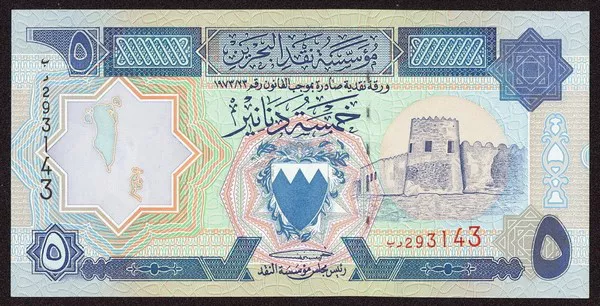The Bahraini dinar stands as a beacon of economic strength and stability in the Gulf region. Renowned for its resilience, the currency has weathered various economic storms, maintaining its robust standing on the global stage. In this comprehensive article, we delve into the intricacies that contribute to the formidable strength of the Bahraini dinar, examining economic, geopolitical, and financial factors that have shaped its trajectory.
Historical Overview:
Before dissecting the current strengths of the Bahraini dinar, it is essential to explore its historical evolution. Introduced in 1965, the dinar replaced the Gulf rupee and quickly became a symbol of Bahrain’s economic sovereignty. Initially pegged to the British pound, the currency underwent a pegging shift to the U.S. dollar in 2001. This shift marked a pivotal moment in the dinar’s history, aligning it with one of the world’s major reserve currencies.
Bahraini Dinar: Unraveling the Factors Behind its Stability
1. Economic Stability:
One of the fundamental pillars supporting the strength of the Bahraini dinar is the country’s unwavering commitment to economic stability. Bahrain’s government has consistently pursued prudent fiscal policies, maintaining a balanced budget and implementing sound economic strategies. The country’s resilience to external shocks and its ability to adapt to changing global economic dynamics contribute significantly to the stability of the dinar.
2. Pegging Mechanism:
The pegging mechanism plays a crucial role in fortifying the Bahraini dinar. The decision to peg the dinar to the U.S. dollar at a fixed exchange rate enhances monetary stability and fosters confidence in the currency. This fixed exchange rate provides businesses and investors with a predictable and reliable environment for economic planning, bolstering the attractiveness of the dinar for international transactions.
3. Financial Sector Resilience:
Bahrain’s robust and well-regulated financial sector is a cornerstone of the dinar’s strength. The Central Bank of Bahrain oversees the country’s monetary policies, ensuring a transparent and stable financial environment. The stringent regulatory framework contributes to the prevention of financial imbalances and instills confidence in both domestic and international investors.
4. Diversification Efforts:
Bahrain’s proactive approach to economic diversification has played a pivotal role in the strength of its currency. Recognizing the volatility associated with oil-dependent economies, Bahrain has strategically diversified its economic base. Sectors such as finance, tourism, and manufacturing have flourished, reducing dependence on oil revenues. This diversification not only enhances economic resilience but also contributes to the stability and strength of the Bahraini dinar.
5. Global Financial Services Hub:
Bahrain’s emergence as a leading financial services hub in the Gulf region amplifies the global appeal of the dinar. The country’s financial services sector has witnessed substantial growth, attracting international banks and financial institutions. The robust infrastructure and regulatory framework in Bahrain position the dinar as a currency of choice for various financial transactions, including trade and investment.
6. Political Stability:
Political stability is a linchpin in the strength of any currency, and the Bahraini dinar is no exception. Bahrain’s political climate, characterized by relative stability and a commitment to good governance, fosters an environment conducive to economic growth. The government’s ability to navigate political challenges and maintain a stable administration contributes positively to the currency’s strength.
7. Geopolitical Considerations:
While Bahrain navigates regional geopolitical dynamics, its strategic positioning and diplomatic efforts contribute to the strength of the dinar. The country’s efforts to maintain positive relationships with neighboring nations and international partners mitigate potential risks associated with regional tensions, reinforcing the stability of the currency.
8. Global Economic Shifts and Adaptability:
Bahrain’s ability to adapt to global economic shifts is instrumental in preserving the strength of its currency. Fluctuations in oil prices, changes in global trade dynamics, and economic uncertainties require nimble responses. Bahrain’s adaptability to these challenges ensures that the dinar remains resilient in the face of evolving global economic landscapes.
Challenges and Mitigation Strategies:
No currency is immune to challenges, and the Bahraini dinar is no exception. Challenges such as external economic shocks, geopolitical uncertainties, and global economic downturns can impact the currency’s stability. However, Bahrain’s proactive approach to mitigating risks, coupled with its diversified economy and robust financial sector, positions the dinar to withstand challenges and maintain its strength.
See Also: Bahraini Dinar (BHD) Currency: History, Symbol, Codes & Denominations
Conclusion:
In conclusion, the Bahraini dinar’s strength is a testament to the country’s economic prudence, political stability, and strategic initiatives. From its historical roots to its current standing as a global currency of strength, the Bahraini dinar reflects the nation’s resilience and adaptability. As Bahrain continues to navigate the complexities of the global economy, the dinar stands as a symbol of economic fortitude, contributing to the country’s status as a key player in the international financial arena.


